By Michael Barker
Doctrine and Covenants Section 14 (Book of Commandments (BoC) 12 (cf. LDS D&C 14; Community of Christ (CoC) D&C 12))
Date: [1-14] June 1829
Place: Fayette, Seneca County, New York
Historical Note: Most of the Book of Mormon was revealed between April and June 1829 in Harmony (now Oakland), Pennsylvania. For several reasons Joseph and Oliver asked the Whitmer family in Fayette, New York, for help. The Whitmers knew of the Book of Mormon before going to Pennsylvania. Oliver had conversed with David Whitmer (Oliver had stopped by David’s on the way to Harmony to meet Joseph and had promised to send back information about the plates) about the ancient record and after arriving in Harmony, had sent the Whitmers a small transcript of the Book of Mormon. Oliver wrote, explaining the situation in Harmony and asking David if they could work in his father’s (Peter Whitmer, Sr.) house while completing the work on the Book of Mormon. In response, David Whitmer traveled the 135 miles to Harmony to help with the move. The party left for Fayette about 1 June. Section 14 was received in Fayette shortly after their arrival. David took Oliver and Joseph to the residence of his father, Peter Whitmer, Sr. Section 14 contains the same introduction as D&C 6, 11, & 12. John Whitmer would later become a scribe to Joseph for a portion of the Book of Mormon manuscript. Whitmer was twenty-seven years old.
“He proposed that we should have our board free of charge,” wrote Joseph. “Upon our arrival, we found Mr. Whitmer’s family very anxious concerning the work, and very friendly towards ourselves. They continued so, boarded and lodged us according to proposal, and John Whitmer, in particular, assisted us very much in writing during the remainder of the work.” (Emma arrived at the Whitmer home shortly after Joseph and Oliver and also acted as a scribe.)
Publication Note: Section 14 was first published as chapter 12 in the BoC in 1833.
Biographical Note: David Whitmer was born 7 January 1805 near Harrisburg, Dauphin County, Pennsylvania. He was one of the Three Witnesses of the Book of Mormon in 1829. He was baptized, and possibly ordained apostle, in June 1829. . Married Julia Ann Jolly on 9 June 1831 in Seneca County, New York. Two children: David J. (born in Missouri), and Julia A.E. (born in Ohio). Chosen and ordained successor to Joseph Smith and President of the Church in Missouri 7 July 1834. Chosen to receive “endowment” (not the temple endowment) in Kirtland Temple 23 Jun3 1834. Assisted in choosing twelve apostles in 1835. Rejected by Missouri Saints as president of Church in Missouri 5 February 1838. Excommunicated from Church 13 April 1838 at Far West, Missouri, for apostasy. For fifty years maintained strict separation from Church. Died 25 January 1888 at Richmond, Ray County, Missouri.
Original Inscription in Revelation Book 1: Non existent
Doctrine and Covenants Section 15 (from BoC 13 (cf. LDS D&C 15; CoC D&C 13))
Date: [1-14]June 1829
Place: Fayette, Seneca County, New York
Publication Note: Section 15 was first published as chapter 13 in the BoC in 1833
Biographical Note: John Whitmer was born 27 August 1802 in Pennsylvania. Baptized June 1829 by Oliver Cowdery. One of Eight Witnesses of the Book of Mormon June 1829. Assisted Joseph in arranging and copying revelations July 1830. Served as scribe to Joseph Smith in Bible “translation”. Called as Church Historian 8 March 1831; ordained contrary to his wishes 9 April 1831 in Kirtland. Began history of Church, called “The Book of John Whitmer,” which spanned years 1831-38. Appointed to accompany Oliver Cowdery to Jackson county, Missouri, with the revelations for printing November 1831. Left Ohio 20 November 1831 and arrived in Jackson County, Missouri, 5 January 1832. Married Sarah Jackson 10 February 1933 in Jackson County, Missouri. Five children: Nancy Jane, John Oliver, Sarah Elizabeth, Jacob David Jackson, and Alexander Peter Jefferson. Ordained counselor to David Whitmer as one of presidents of Church in Missouri 8 July 1834. Appointed editor of Messenger and Advocate in Kirtland 18 May 1835, contrary to his wishes. Edited publication June 1835-March 1836. Returned to Clay County, Missouri, by 25 July 1836. In 1836-37, together with W.W. Phelps, began to administer affairs of Church in Missouri independent of high council. With W.W. Phelps, located gathering place at Far West, Missouri; identified temple site; and purchased property in own names with Church funds – all without approval of Church high council or membership. These actions created much confusion and difficulty for Church in Missouri and finally resulted in Whitmer’s excommunication. Despite difficulties, upheld as counselor to David Whitmer November 1837. Rejected 5 February 1838. Excommunicated 10 March 1938 at Far West, Misouri. Died 11 July 1878.
Original Inscription in Revelation Book 1: Non existent
Doctrine and Covenants Section 16 (from BoC 14 (cf. LDS D&C 16; CoC D&C 14))
Date: [1-14] June 1829
Place: Fayette, Seneca County, New York.
Publication Note: Section 16 was first published as chapter 14 in the BoC in 1833. The wording of this revelation is the same as that given to his brother John Whitmer (D&C15).
Biographical Note: Peter Whitmer, Jr. was born 27 September 1809 at Fayette, Seneca County, New York. One of Eight Witnesses of the Book of Mormon on June 1829. Baptized by Oliver Cowdery and ordained elder by 9 June 1830. Called to preach to the Lamanites, along with others, September 1830. Married Vashti Higley on 14 October 1832 in Jackson County, Missouri. Ceremony performed by Oliver Cowdery. Three children: Emma, Kate, and Vashti P.; last child born 20 May 1837, after Whitmer’s death. Appointed to receive “endowment” (once again, not the temple endowment) in Kirtland Temple 23 June 1834. Appointed and set apart as high councilor in Kirtland to fill vacancy occasioned by death of brother, Christian. Died of tuberculosis near Liberty, Clay County, Missouri, 22 September 1836.
Original Inscription in Revelation Book 1: Non existent
Doctrine and Covenants Section 18 (from BoC 15 (cf. LDS D&C 18; CoC D&C 16))
Date: June 1829 (before 14 June)
On 14 June 1829, Oliver Cowdery addressed a letter to Hyrum Smith from Fayette, New York, which contained portions of section 18 (specifically verses 10-13 and 42). This letter is contained in the Joseph Smith Collection, Church Archives. It was not until 6 April 1830 that the Church of Christ was organized at Manchester, New York. It was here that Oliver Cowdery ordained Joseph Smith an elder, prophet, seer.
Place: Fayett, Seneca County, New York.
Historical Note: This revelation, received for Oliver Cowdery and David Whitmer, explains the eternal worth of the human soul, the importance of the Atonement, and the obligation of the Saints to preach the gospel. It also states that twelve apostles will be called and that Oliver Cowdery and David Whitmer will choose them (vs. 37-39). The twelve apostles were chosen in February 1835 by the Three Witness of the Book of Mormon.
On 26 October 1831:
The Clerk [Oliver Cowdery] said that the directions which himself & his br[other]. David Whitmer had received this morning respecting the choice of the twelve was that they would be ordained & sent forth from the Land of Zion [Missouri]” (Cannon & Cook).
As noted earlier, five and a half years later on 14 February 1835, Cowdery and David Whitmer with the addition of Martin Harris (the three witnesses to the Book of Mormon) chose twelve men to be ordained as apostles in Kirtland, Ohio (Kirtland Council Minute Book, 149).
Note verse 9 which designates Oliver Cowdery and David Whitmer as apostles. Journal of Discoursed 6:320 states that Cowdery and Whitmer were apostles in the sense that they were witnesses of Christ and his word as found in the Book of Mormon.
“…As early as the summer of 1828, Joseph Smith Jr.’s revelations had discussed establishing a church. In the aftermath of Martin Harris’s loss of the Book of Mormon manuscript, Joseph dictated a revelation stating the Lord “will establish my church” (see D&C 10:53). It was becoming clear that Joseph Smith’s mission would not end with the translation of the plates. Yet even believing associates like Joseph Knight were unaware of preparations Joseph and Oliver seemed to be keeping close to the vest.
Knight later recalled that he did not learn of the impending church organization until shortly before the actual event. “Now in the Spring of 1830,” he recalled, “I went with my team and took Joseph out to Manchester to his Father. When we was on our way he told me that there must be a Church formed but did not tell when.”
Preparations had been under way since at least June 1829. In that month, Joseph Smith dictated the revelation that would become Doctrine and Covenants 18 for Oliver Cowdery. In it Oliver was instructed to “build up my church, and my gospel, and my rock.” In doing so, Cowdery was told to “rely upon the things which are written” (see D&C 18:3–4). The Book of Mormon translation was nearly finished, and Cowdery indeed used the manuscript as he began to outline the polity of the new church….”(history.lds.org)
Publication Note: Section 18 was first published as chapter 15 of the BoC.
Revision: 1835 D&C 43 (cf. LDS D&C 18:3-5, 11; CoC D&C 16:1, 3)
Original Inscription in Revelation Book 1: Non existent
Doctrine and Covenants Section 17 (from 1835 D&C 42 (cf. LDS D&C 17; CoC 15))
Date: [14-30] June 1829
Place: Fayette, Seneca County, New York
Historical Note: D&C 5:15 states that three witnesses will be sent “forth of my word”. During the revealing of the Book of Mormon, Joseph had discovered Moroni’s instructions that three people would be privileged to see the record (Ether 5:2-4). Joseph inquired of the Lord and received section 17. David Whitmer stated that the viewing of the plates occurred about the end of June 1829.
As the translation neared completion, Harris, together with Oliver Cowdery and David Whitmer, begged Joseph to have the privilege of being the three promised witnesses mentioned in the earlier revelation and in a passage of the Book of Mormon itself. Joseph again inquired and received the revelation now contained in Doctrine and Covenants 17, promising each of the men they would witness the plates if they would “rely upon my word” with “full purpose of heart.” (history.lds.org)
In January 1859, Orson Pratt recounted the following:
These three men(Oliver Cowdery, Martin Harris, David Whitmer)…went and saw Mr. Smith , and inquired of him whether it would be their privilege to behold the plates and know from heaven that the book was true…”
This revelation was not included in the BoC. Ezra Booth mentioned that he examined it while he was in Missouri (Booth to Rev. Ira Eddy, 24 Oct. 1831, Ohio Star 2 [27 Oct. 1831]: 3, Ravenna, Ohio).
Publication Note: Section 17 was first published in the Messenger and Advocate (September 1835), and was included as section 42 in the 1835 edition of the Doct & Coven. The 1835 edition was available for purchase about mid-September 1835.
Commentary: Urim and Thummin
In two 1829 revelations, as published in the 1835 D&C, mention is made of the “Urim and Thumim.” BoC 9 (D&C 10) dated May 1829, states that Joseph delivered to Martin Harris writings “which you had power to translate.” This was expanded to include (in italic) that Joseph had power “to translate, by the means of the Urim and Thummim.” This addition, using biblical instruments of divination appears to be an anachronism for an 1829 revelation.
Of interest is that the second revelation, though in manuscript form, was not published in the BoC. When it was copied into the Kirtland Revelation Book in 1834-35, the text had already been changed to reflect the current understanding. The three witnesses to the Book of Mormon were to see certain artifacts, such as “a view of the plates, and also the breastplate, the sword of Laban, the Urim and Thum[m]im”. The Kirtland Revelation Book manuscript copy thus reflects a later tradition not know in June 1829. The printed testimony of the three witnesses only mentioned the plates. It is of interest that while the term “Urim and Thummim” is contained in the Bible, it is not found in the Book of Mormon.
It was not until about 1832, over two years after the revelation, that the new term was used in church literature. In the Evening and the Morning Star, January 1833, is a brief tentative allusion to two biblical objects, Teraphim and Urim and Thummim: “It [the Book of Mormon] was translated by the gift and power of God, by an unlearned man, through the aid of a pair of Interpreters, or spectacles – (know, perhaps , in ancient days as Teraphim, or Urim and Thumim)[.]”
Theraphim, it should be noted, were probably some sort of figurines or statues representing the image of idols. Worship of Teraphim was forbidden by the ten commandments. When mentioned in Israelite context, they are almost always condemned (see Judg 17:5; 18:14, 17-18, 20, and Hosea 3:4 – “Urim and Thumim” appear in Ex. 28:30; Lev 8:8; Deut 33:8; Ezra 2:63; Heh 7:65; “Urim” in Num 27:21; 1 Sam 28:6). Teraphim were used for divination by opening up the liver and examining it (Ezek 21:21). It would be an odd quirk of historical fate for someone to suggest that the Teraphim would be used as a means for translating the Book of Mormon. One also wonders if the writer of the Evening and the Morning Star article knew the nature of biblical Urim and Thummim. There is no evidence that these were used for translation, as the term is presently understood. They were to obtain answers to specific questions which could be answered with a simple yes or no.
The use of Urim and Thumim in connection with the translating the Book of Mormon became a fact by the end of 1834. Oliver Cowdery wrote: “…he [Joseph Smith] translated, with the Urim and Thummim, or, as the Nephites whould [would] have said, ‘Interpreters,’ the history, or record, called ‘The Book of Mormon’ (Cowdery to Phelps, 7 Sept 1834, in Messenger and Advocate 1 (Oc. 1834): 14). W.W. Phelps wrote on 15 Jan. 1831 that he heard that the Book of Mormon “was interpreted by Joseph Smith, through a pair of silver spectacles, found with the plates” (Phelps to E.D. Howe, 15 jan. 1831, in E. D. Howe, Mormonism Unvailed, ).
That the “Urim and Thummim” was an addition to the text is evident since it was a development in early church history and culminated in the inclusion in the 1835 D&C. Primary sources tell us that a seer stone was used in the translation process. But the wording here does not clear up questions about what objects were used in producing the Book of Mormon.
Original Inscription in Revelation Book 1: Non existent
Bibliography
Lyndon W. Cook, The Revelations of the Prophet Joseph Smith: A Historical and Biographical Commentary of the Doctrine and Covenants, Deseret Book, 1985
H. Michael Marquardt, The Joseph Smith Revelations: Text and Commentary, Signature Books, 1999
Richard P. Howard, Restoration Scriptures: A Study of Their Textual Development, Second Edition, Herald Publishing House, 1995
Steven C. Harper, Making Sense of the Doctrine and Covenants: A Guided Tour through Modern Revelations, Deseret Book, 2008
Richard Lyman Bushman, Joseph Smith, Rough Stone Rolling: A Cultural Biography of Mormonism’s Founder, Knopf, Borzoi Books, 2005
Richard E. Turley Jr., William W. Slaughter, How We Got the Doctrine and Covenants, Deseret Book, 2012
Joseph Smith, Junior – Compiler, The Parallel Doctrine and Covenants, The 1832-1833, 133, and 1835, Editions of Joseph Smith’s Revelations, The Smith-Pettit Foundation, 2009
Robin Scott Jensen, Robert J. Woodford, Steven C. Harper- Volume Editors, The Joseph Smith Papers: Revelations and Translations, Manuscript Revelation Books, The Church Historian’s Press, 2009

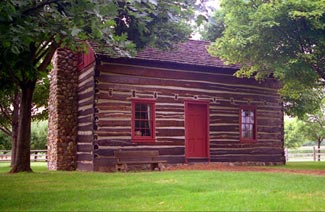
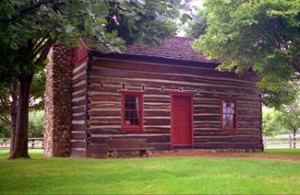
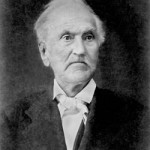
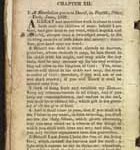
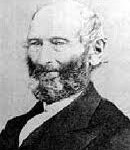
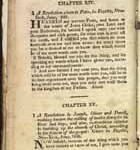
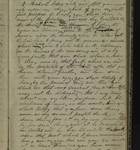



Recent Comments